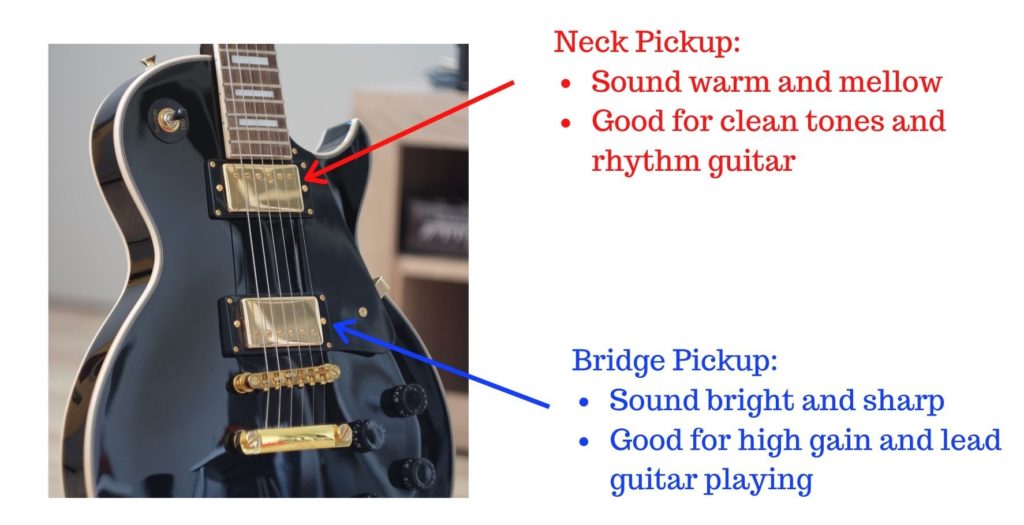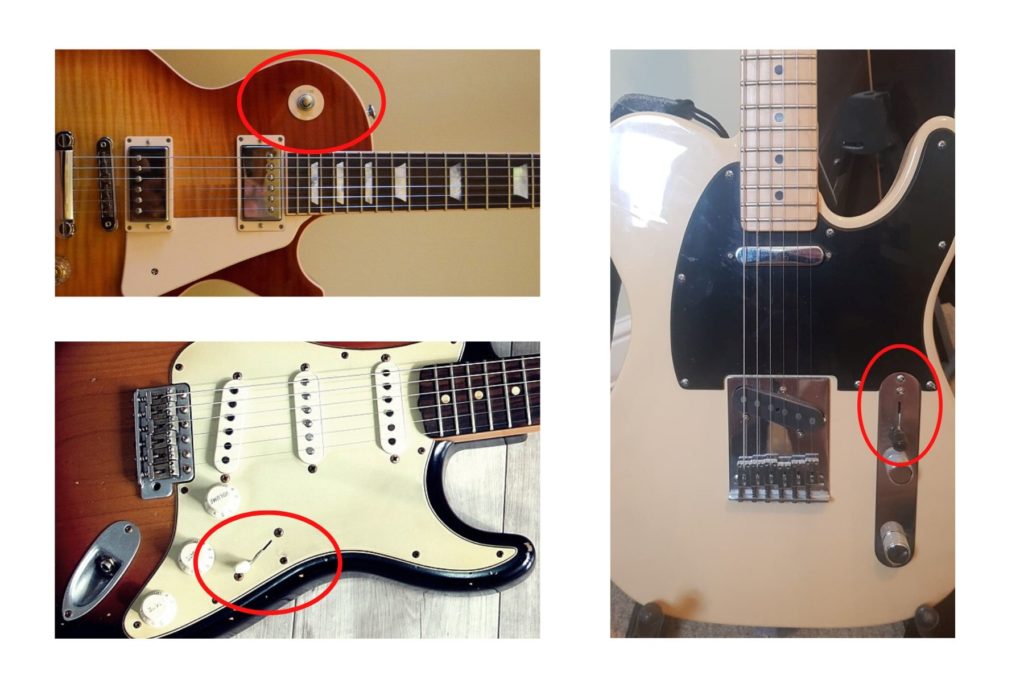Bridge vs Neck Pickup
The bridge pickup produces a brighter tone than the neck pickup which sounds warmer and more mellow. The bridge pickup is often used for lead guitar and heavier styles of music with more gain such as rock and metal, whilst the neck pickup is primarily used for rhythm guitar and cleaner tones.

Bridge Pickups
Neck Pickups
This warm and smooth tone is often preferred when using clean amplifier settings as it prevents it from sounding too harsh and bright. The loss of clarity you get with the neck pickup is not an issue with clean amp settings as you don’t need tonnes of definition which is more important when using distorted amp settings.
The neck pickup isn’t just used for clean amp settings though, but it is also popular for rhythm playing. This is because it sounds more mellow so doesn’t “cut” through the mix as much as the neck pickup which can sound too bold and brash.
Pickup Selectors

Frequently Asked Questions
If you’ve still got some more questions about pickup placement, and why it matters, then don’t worry! Here are the answers to some of the most frequently asked questions.
Is the neck pickup louder than the bridge pickup?
Neck pickups sound louder than bridge pickups because the strings vibrate more around this area. When the strings get closer to the bridge, they vibrate less. Therefore, the volume is lower, because there are less vibrations for the pickups to detect.
Are specific pickups designed for each position?
You will often see that there are pickups specifically designed as “neck pickups” or “bridge pickups”, if you’re looking for after-market pickups to upgrade your guitar with. Often, these have varying characteristics causing them to sound different. However, it is still possible to use a “bridge pickup” in the neck position, as long as it fits the guitar you are modifying.
What is a treble pickup?
Treble pickups are another name for the bridge pickup. You’ll commonly see Les Paul style guitars with the pickup selector being labelled as either “treble” or “rhythm”.
What is a rhythm pickup?
Rhythm pickups simply mean neck pickups. This is often seen on Les Paul style guitars which have a pickup selector that names the bridge pickup as “treble” and the neck pickup as “rhythm”.
Which pickup should you use for metal music?
Guitarists playing heavier genres like metal, often use the bridge pickup. This gives you more treble, so better note separation which is really handy if you’re playing through a heavily distorted amp, but don’t want your tone to sound muddy.
Does pickup height matter?
The height of the pickup does affect the tone of an electric guitar. If you have pickups that are setup so that there isn’t a lot of room between the pickup and string, the volume will be higher, but the sound will be less crisp and clear. If you lower the pickup, the volume will decrease, but you’ll get better clarity.
Why are some pickups slanted?
Some pickups are angled in order to improve the tone. Angling the pickup towards the bridge allows the lower strings to sound more full and warmer, and the higher strings to sound brighter and more crisp. Take a look at this post on angled pickups to learn more about this topic.
So there you go! That’s the difference between bridge and neck pickups! I hope you’ve found this article helpful, thanks for reading. Here are some other posts you might find useful:
